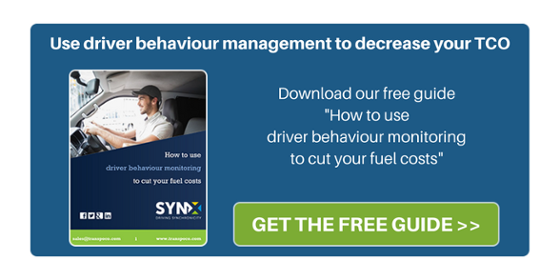
Updated 20th February 2019
This blog post is the first in an alphabetically themed series of articles detailing some important terms often used in fleet management or driving for work. The idea is that, with the help of the alphabet, we are able to offer a broad view on fleet management. Ideally, we will provide a useful fleet management glossary; and of course if there is any word you’d like to add to the list, we would value your feedback and work on that content. But for now, as the alphabet begins with “A”, we’ll be kicking things off with Acceleration!
A is for Acceleration—but what is exactly acceleration?
Acceleration typically describes an increase in speed in a vehicle moving forward. Its opposite is deceleration, which describes the slowing down of the vehicle itself. Acceleration is not necessarily inherently negative as it is natural to accelerate at some point when driving; having said that, rapid acceleration and breaking the speed limit are considered aggressive driving behaviours that potentially lead to incidents and collisions and have to be avoided at all costs. Excessive, inappropriate speed remains an important contributory factor in road traffic injuries and fatal crashes.
Acceleration also affects cornering (negotiating a turn, basically, which is also down to the configuration of the road). When we talk about acceleration we usually consider a vehicle moving forward, while cornering involves acceleration when turning left or right. Though even experienced drivers might not see cornering as dangerous, it depends on how acceleration is utilised in the process, i.e. whether it is deployed at the right moment, to the correct degree and in a way appropriate to road layout and driving conditions.
How is acceleration impacting fleet driving?
As reported previously, acceleration, as well as cornering, is a natural process when driving. With smooth driving, acceleration and deceleration are done gradually and cornering is also done safely. Experts advise to brake and gradually decelerate before taking the corner, not while in the corner, and accelerate only when the front wheels are straight, but even the most experienced driver might fall into dangerous practices such as harsh cornering and rapid acceleration.
These aggressive driving events indicate an unsafe driving style that might increase the chances of an incident or a collision and should be avoided. Incidentally, such a style is impacting not only on safety but also on fuel consumption and vehicle conditions. Not adopting a smooth driving style consumes more fuel and is more likely to stress your vehicle, and the sudden braking you might need to apply to a speeding vehicle, apart from being risky, can seriously damage it. Speeding might not necessarily result in an accident, but your expenses can increase if your drivers end up getting speeding fines.
How can acceleration be prevented?
As mentioned previously, acceleration is not necessarily inherently bad, as it is integral to the dynamics of driving. As with many things, when they are taken to excess and carried out without discipline, they shift from something positive to something negative. Rapid acceleration and breaking the speed limit should be minimised in order to run a safe fleet, prevent the risk of incidents, decrease the possibilities of being fined and maintain fuel consumption to normal limits. A consistent training process can help drivers avoid slipping into unsafe practices, and it can further be boosted by a driver behaviour monitoring application, able to detect any rapid acceleration and harsh cornering events and where they are happening. 


